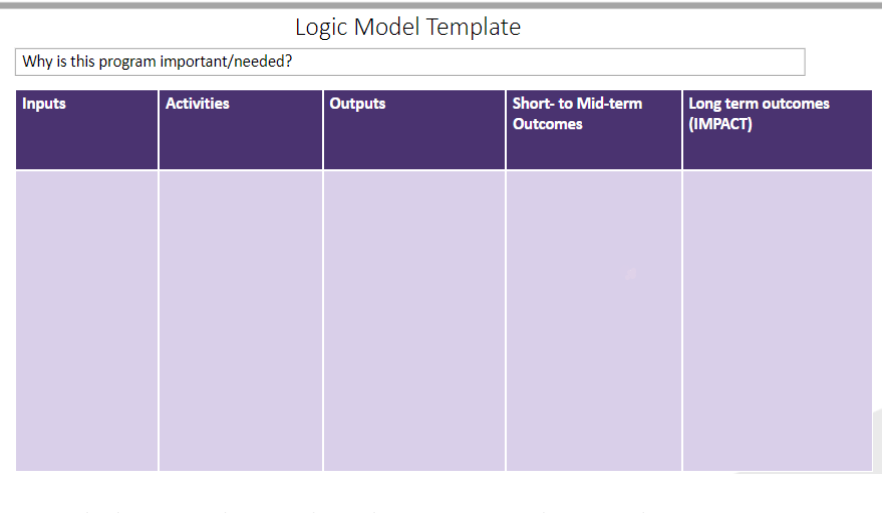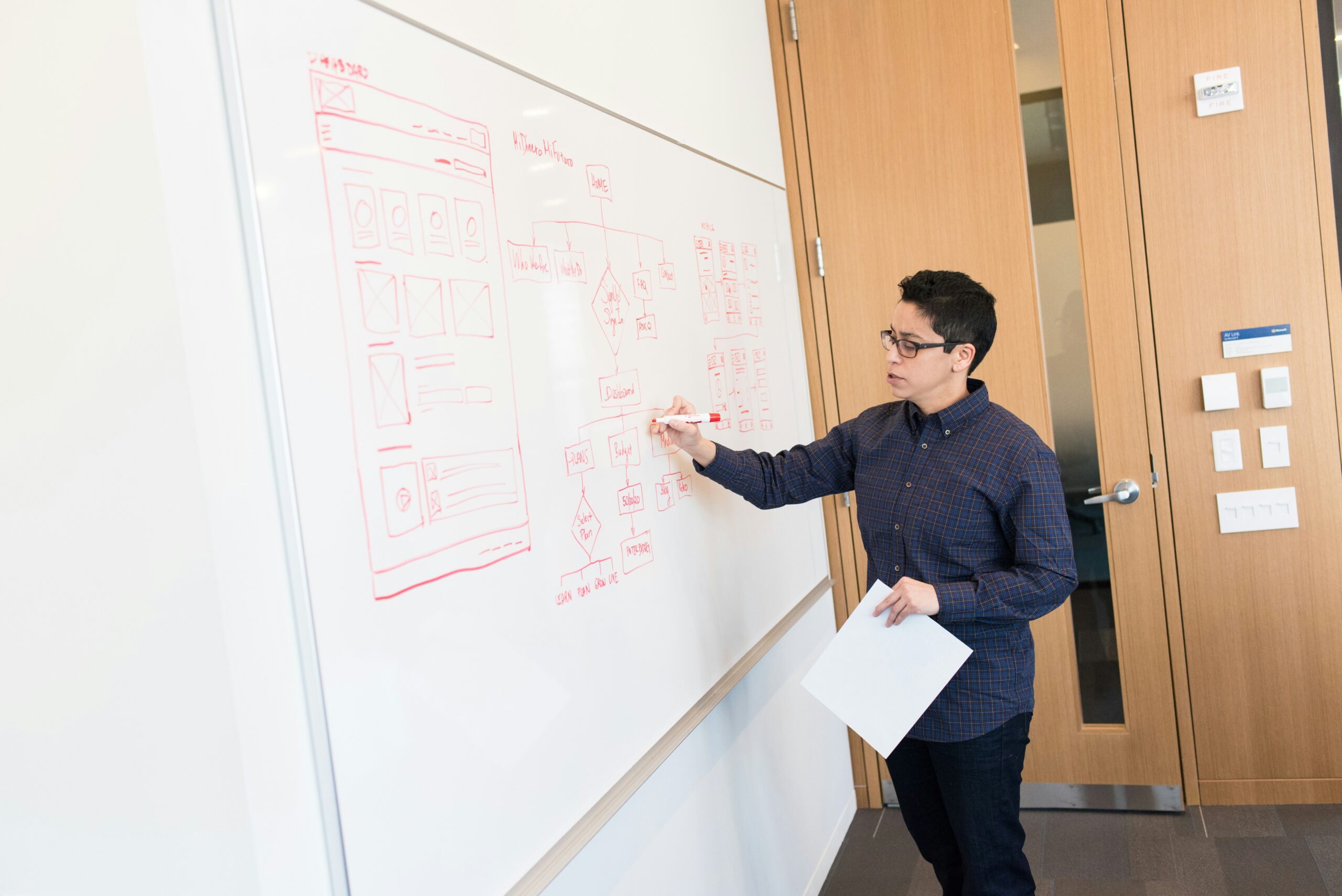One of the first questions that we ask our teams as we begin building evaluation activities is: Can you tell me about your program? Without a solid understanding of what a program or initiative does and aims to achieve, it is difficult to begin any kind of evaluation work, such as designing a survey or evaluation questions. To hone in on that question, the evaluation team at TSNE often begins our evaluation activities with a powerful tool called a logic model.
What is a logic model?

A logic model is a visual road map of how your program works and what it aims to achieve. While logic models come in many different forms, shapes, and sizes, it typically includes five main components:
- Inputs: Resources needed to successfully implement your program (e.g., staffing, funding, facilities, equipment)
- Activities: Key interventions, strategies, and actions that will make up your program (e.g., educational training)
- Outputs: Types of services, processes, and products that result from program activities (e.g., number of participants trained, number of training sessions completed, number of coaching hours)
- Short- and medium-term outcomes: Changes in attitudes, behaviors, and actions resulting from your program
- Long-term outcomes: Changes to conditions, status, and/or well-being resulting from your program
How are logic models useful for evaluation work?
For evaluation work, logic models shine in several ways.
First, logic models help tell the story of a program or initiative. Understanding a program, its activities, and what it aims to achieve is an essential part of evaluation work. Without understanding the program, it is challenging to know what we need to measure to understand if our programs are progressing toward their outcomes.
Secondly, logic models are powerful planning tools because they can be adapted and revised. Logic models are meant to be reviewed regularly and revised by the program team. Given that our systems, communities, and resources are oftentimes going through changes, logic models can be updated to reflect those changes. Taking time to pause and reflect on the components of a logic model can be useful to a program team and help guide the evaluation team on identifying metrics or measures.
Thirdly, the visual aspect of a logic model lends itself to mapping connections and checking for logic across its components. Reviewing outcomes to see if the components (resources, activities, and outputs) are present that lead to such attitudinal, behavioral, and social condition changes can provide important insights into a program and give guidance on whether the work is leading to expected impacts.
What are some tips for developing a logic model?
Logic models do not always need to look exactly like the template above but are usually a one pager and communicate (if not with the exact terminology) most of the components above. If you are new to logic models, try working with a clear and simple template to start like the one above. The most important thing about a logic model is that it communicates what your program is about and is clear and simple to understand. If the people who are looking at it cannot explain what your program does or seeks to accomplish back to you, then it might not be clear enough.
Involve multiple stakeholders in building a logic model. By drawing upon the perspectives of multiple staff, clients, and citizens, you might be able to identify and uncover resources, activities, or outcomes that may not have been captured if you were creating a logic model from a short program description from the organization’s website.
Start at the end. First, look at the long-term outcomes to answer the question: What does success look like for our program participants? We have found it helpful to begin developing a logic model by first identifying the key outcomes/impacts we are trying to make and then mapping backward to look at the outputs and activities. By starting with our outcomes, we can check our logic and identify if our program and its activities are leading towards the outcomes (attitude changes, behavior changes, systems changes, or changes in conditions at a broader level).
Interested in learning more? Check out the resources below.
There are lots of wonderful resources on logic models available across sectors. Here are a few resources that I have found particularly useful for my evaluation work in the nonprofit sector.
- The Better Evaluation website has a list of resources that you can check out to learn more about how to develop and use logic models in your work across sectors.
- The Community Toolbox has information on how to build logic models, as well as examples of logic models from the fields of public health and the arts.
- The W.K Kellogg Foundation’s Step-by-Step Guide of Evaluation has a chapter dedicated to developing a logic model, evaluation questions, a measurement framework, and evaluation plan.
- How to create a logic model (Free mini course on Coursera: 1.5 hours)
- The Charles and Lynn Schusterman Family Philanthropies’ Data Playbook has a section on how to use logic models to define your key evaluation questions.
- Mathematica (a research and data analytics consultancy firm) published an informative brief (2019) that describes how you can use logic models to guide and plan for your next evaluation project.
- Here’s a couple more articles from our TSNE blog to get you started: Starting small: How to build a nonprofit evaluation practice and Using reflection activities to bolster program impact.
Check out TSNE’s blog archives on learning and evaluation to learn more!
